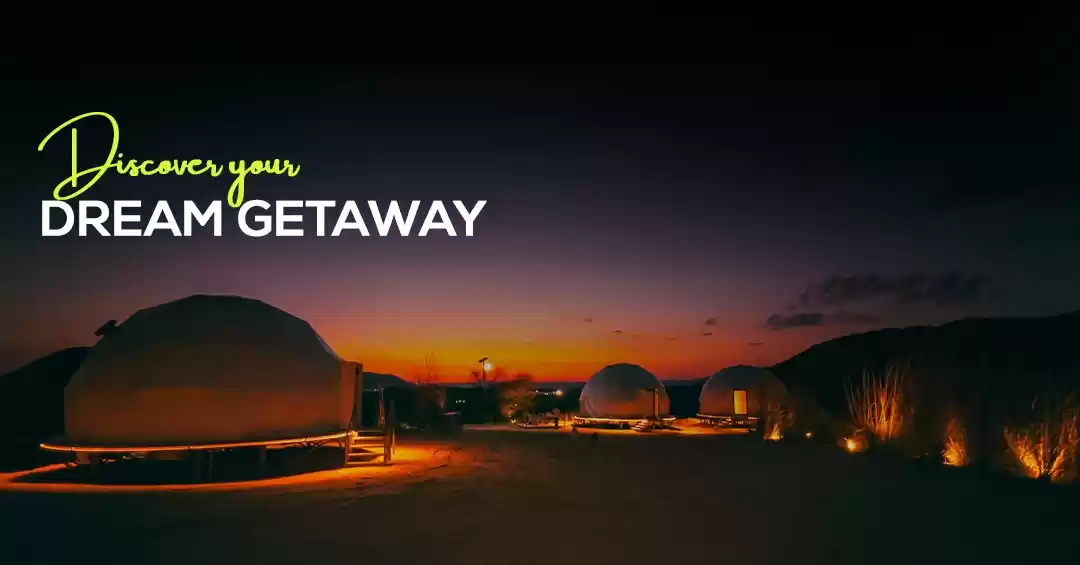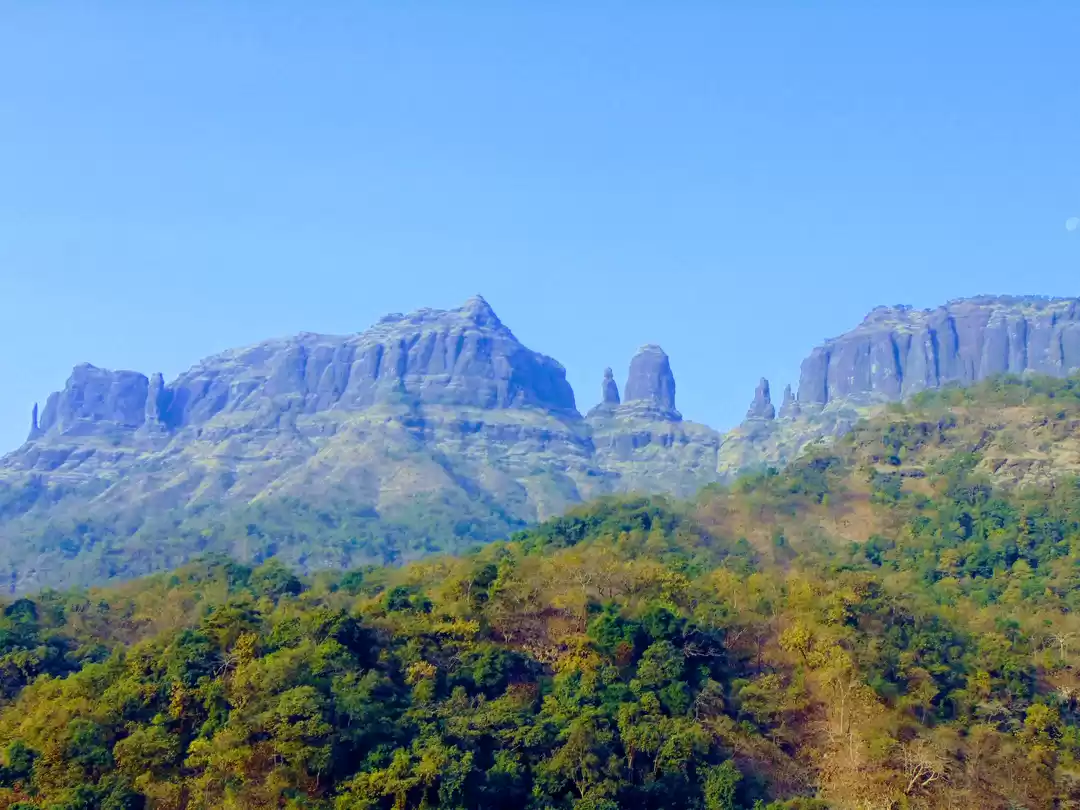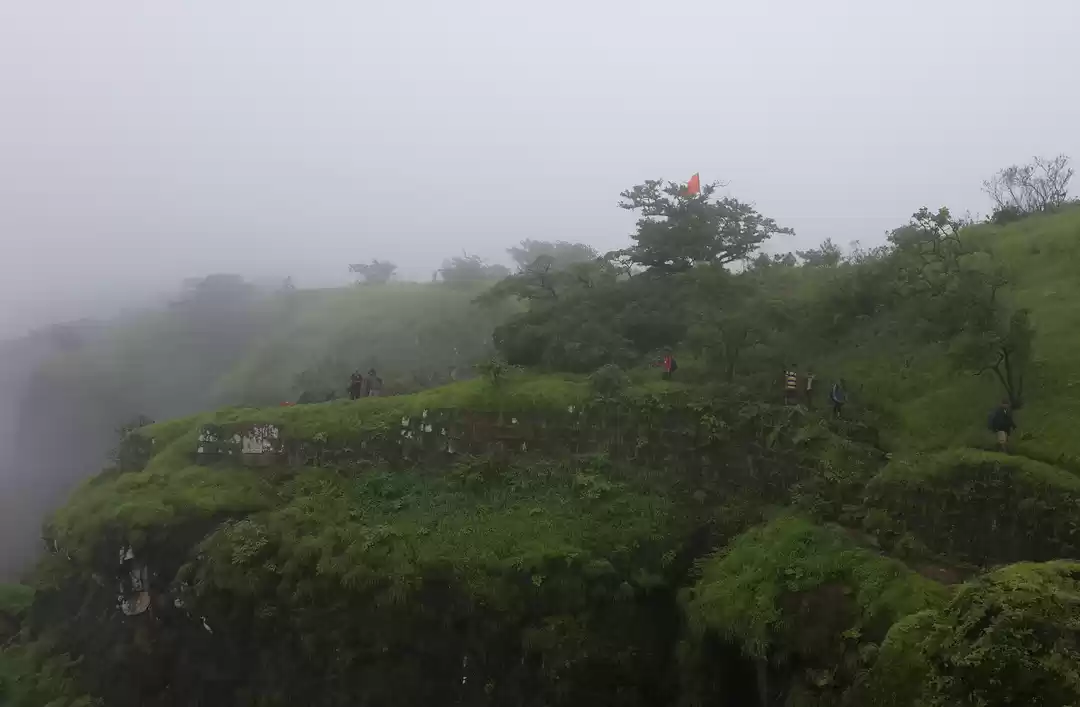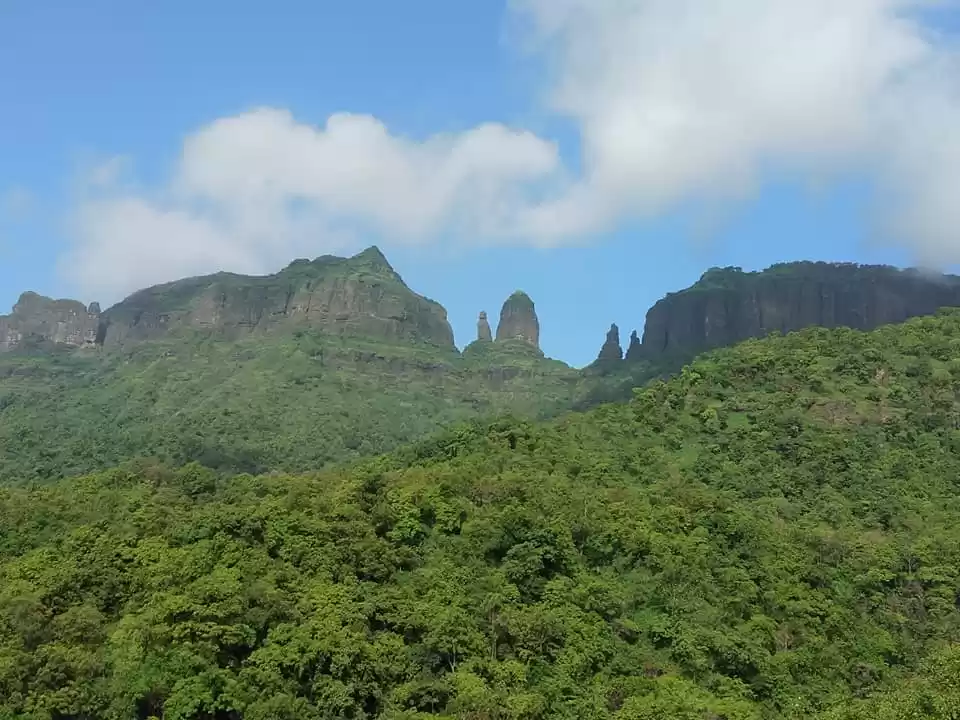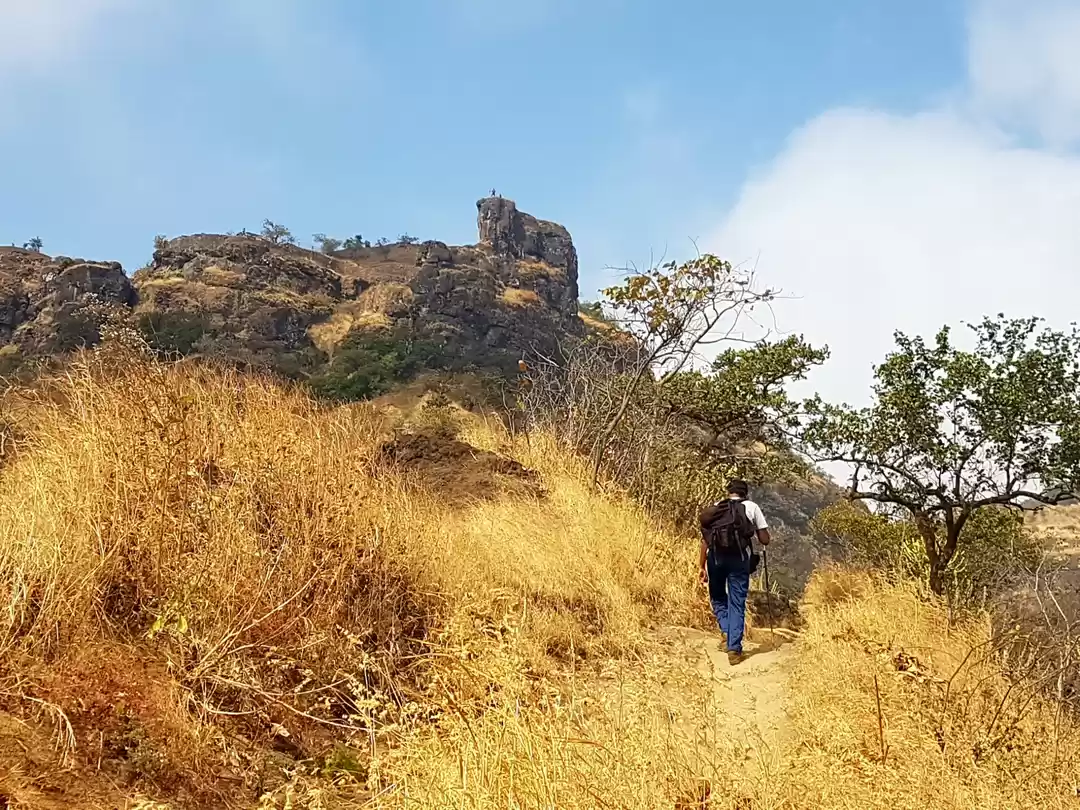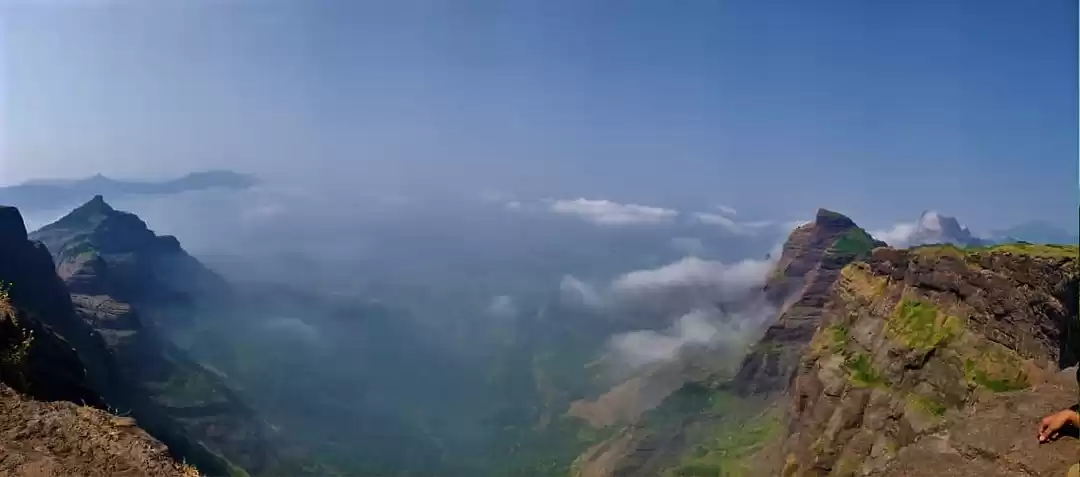
Alighting at the train station at Asangaon, I sensed the usefulness of graffiti as a means of beautification of public places. While one of the displays sought to preach cleanliness as essential for a better India, the other showed how industrial flumes are making the environment toxic. Still another seemed to be a visual dedicated to the idea of Digital India. The graffiti shone as dawn broke and the nip in the air thawed. We ventured out of the station to find the town coming to life. There were milkmen and paperboys doing the rounds and people answering their doorbells for the same. We needed to reach Mahuli, the base point for the trek to Mahuli fort and I’d recommend most to take an auto-rickshaw from the rickshaw stand situated just outside the station’s exit on the west. I also feel that we should have paid heed to that advice from well-meaning rickshaw drivers. However, armed with the zeal of an insurgent and egged on by some misinformation from the locals who told us that we would make it to the base point in just about 15-20 minutes if we chose to walk, we began the journey on foot.

Our hike took us through narrow by-lanes in a cluttered space where houses were closely-spaced and yet, some were opulent in their display. That was until we walked across the highway through a road which ran beneath the fly-over and put us on course towards Mahuli. We were walking past a hamlet which seemed eerily quiet and deserted. Upon enquiring from a shopkeeper, I learnt that most of the residents were labourers who had gone out for the day’s work.

The resultant quaintness made it seem like a ghost town where wide swathes of overgrown grass were turning yellow owing to a lack of rain and upkeep. At this point we had walked for about 45 minutes and it seemed like we had begun our trek prematurely for the tiredness was becoming evident; until we heard a rumbling sound behind us and spotted a State transport (ST) bus. We entered the bus and found it empty except for a couple of policemen and a sadhu who seemed puzzled by our presence in that area. The bus started again, its windows rattling for the road was severely damaged. After a ride of about 15 minutes, we reached Mahuli which fails to announce itself. The only thing of prominence is a centre for the National Service Scheme (NSS) which doubles up as an office for tourism. There were few trekkers in the area and we realised that it was definitely off-season here.

A dirt road in the forest took us to a dhaba located in a farmhouse. The gates opened to a fountain, ornate in its make but not functioning. Roosters and strays roamed the tilled farmland which could have served as an arena for cockfighting too, I somehow got that visual. We had a plate of meetha poha which failed to satiate our hunger. Nevertheless, the trek was not to be delayed and we set out towards the forest at 9.30 a.m.

The route for the trek was well charted, right from the beginning where a huge billboard announced the entry to the forest. At the gates, one is required to pay a sum of Rs 20 for a one-time ticket since the forest is a protected area. There were directions, in Marathi, at the beginning, which put us on course for the trek.


The whole path is easily navigable, some of which can be made out to be stairs from a bygone era which have weathered through the passage of time, making the climb difficult and treacherous in places. The resultant passage involved wading through huge boulders which make the climb tiring since one is required to take big steps.

On the course, there were openings in the forest where the vegetation was minimal and the soil had turned black, indicating that dead plants and animals had contributed to the formation of humus. Coupled with grass which was predominantly of a yellowish tone and one could assume that it had been a harsh summer here.

The initial passage cuts through the forest where vegetation is ample. After an hour or so, it makes way for the higher reaches of the mountain where one treks through narrow pathways carved through the edge of the mountain. From here, the summit with the red flag fluttering over it is visible. However, the trek adopts its most perilous tone from hereon. The margin of error is minimal as one is required to climb huge rocks by wedging their foot in narrow spaces while maintaining their balance by resting one’s hands on the boulders. The higher reaches of the trek have a steady wind on the ascendant mitigating the effect of the heat. One listens intently for a while and the only sound one’ll hear is that of the leaves rustling against the wind, as opposed to night treks where the shrill chirping sound of crickets fills the air.


We reached the peak after trekking for two hours. The fort lies in ruins, amidst a vast open expanse which leads to a temple. As we explored the temple, the fortifications of the fort became visible. These included open caves, a perennial source of water and a small reservoir. While exploring the temple, we spotted a bunch of youngsters cleaning the caves, the fortifications surrounding the temple, and removing the dry leaves. Upon enquiring, we learnt that they were doing this, not on commission but by their own will for they felt that a temple must receive proper upkeep.









There were a couple of missteps during the descent for the topsoil had eroded and the rocks had weathered into gravel which lay strewn on the path. There are numerous points for photography which serve as pit-stops, allowing one to gauge how far they’ve come. However, unlike some other treks where there are vendors at these pit-stops serving lemonade and the like, the Mahuli fort trek is devoid of the same so make sure to carry all the essentials in abundance when trekking in the off-season.
What puzzled me the most was the inefficiency of the administration which fails in the maintenance of a popular hub for tourists and trekkers. Barring the trek route, the village of Mahuli seems to be suffering from abject neglect by the authorities. The road is not fit for commute and one can only imagine how the woes must pile up for both locals and trekkers during the rains. On our way back to Asangaon, we wanted to take the ST bus. However, we learnt that the bus remains erratic in its schedule and sometimes, goes for days without circling Mahuli on its route. This leaves trekkers and locals at the mercy of auto-rickshaws which are overpriced and can’t carry a whole bunch of trekkers at once. The locals, few in number and hence, their voices falling on deaf ears. Important facilities like healthcare and education are a far cry in Mahuli but what is more ominous is the lack of transport which can take one to the nearest hospital at one’s beck and call. The trekkers come and go but the village remains in isolation.




